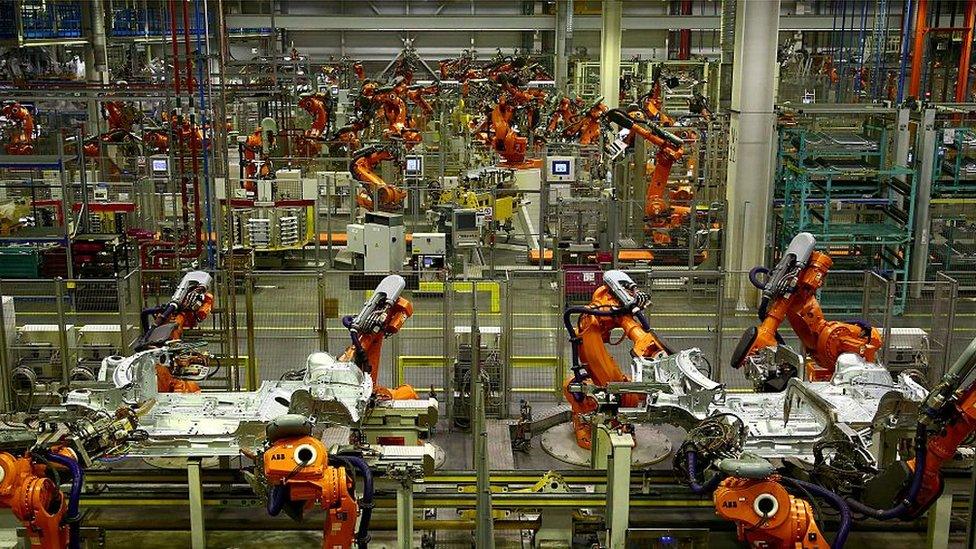NI unemployment remains low
- Published

Jobs in manufacturing have reached their highest level since the survey began
The unemployment rate in NI has increased marginally from last month's record low and now stands at 3.3%.
That is still the third lowest recorded rate and is below the UK rate of 4.2%.
Another measure of the labour market, the Quarterly Employment Survey (QES), suggests the number of employee jobs reached a record high in the first quarter of 2018.
There were 763,440 jobs, an increase of more 18,000 compared to the same period last year.
That is the highest year-on-year increase since in the survey began in 2005.
The QES surveys all employers with 25 or more employees, all public sector employers and a representative sample of smaller firms.
It suggests that the number of private sector jobs increased over the year by 3.4% or 18,500 to their highest recorded level (557,130).
Most of that increase was in the services sector, which is the dominant part of the economy.
Services added almost 12,000 jobs, manufacturing added 3,500 and construction added 2,500.
Fewer public sector jobs
Despite a series of high profile closures and redundancies the number of jobs in manufacturing have reached their highest level since the survey began.
Over the year around 1,000 jobs were added in both food production and the manufacture of machinery and equipment.
The recent problems in the retail sector are also not showing up in the figures - the number of jobs in retail was up by almost 1,500 over the year.
In the public sector the number of jobs was down slightly over the year.
There are now 21,710 fewer public sector jobs than the survey peak in September 2009.